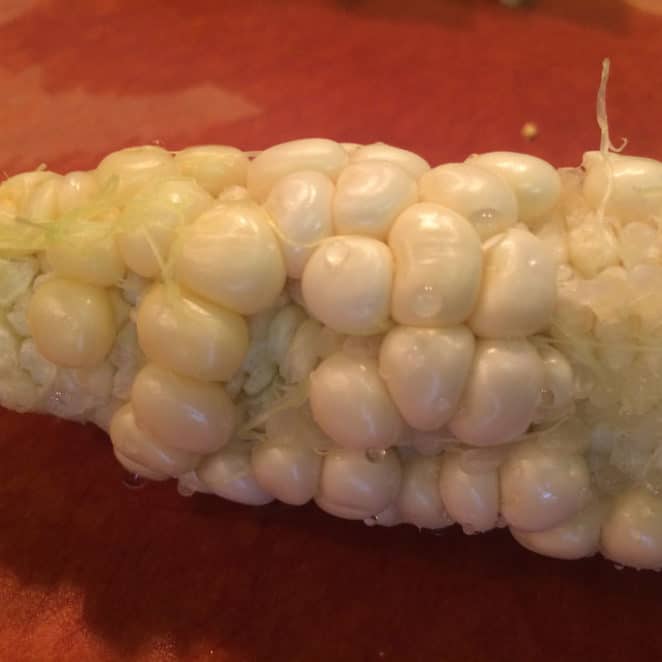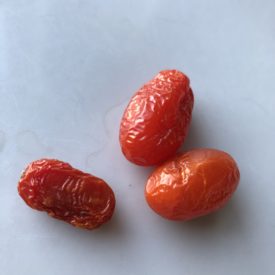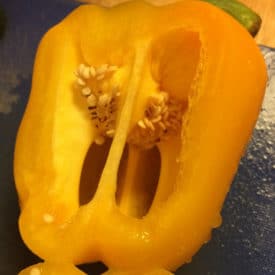
What you see: Shriveled-looking or missing kernels on an ear of corn; some kernels may be irregularly shaped.
What it is: A poorly pollinated ear of a large-kerneled variety of corn.
Eat or toss: Eat! The plump kernels are totally fine. The shriveled ones aren’t harmful; they just never developed into full kernels.
Is it safe to eat an ear of corn if some kernels are shriveled or missing?
Typically, missing or “shriveled-looking” kernels don’t signal that an ear of corn is unsafe, just that it had a hard time getting pollinated back on the field. And getting fully pollinated is no small feat!
Each kernel on an ear of corn must be fertilized separately, with pollen attaching to the corn silks while the ear is still very tiny. Pollen grains travel down each corn silk until arriving at and fertilizing egg cells (scroll down to figure 2 in this paper for a neat diagram of how that works and check out the end of this post for an equally neat video about corn pollination).
Considering that the average ear has hundreds of kernels, that’s a lot of pollen for the wind to distribute from the wheat-like tassels at the top of a corn stalk to the stringy silk clumps lower on the stalk. If pollination doesn’t happen, you get shriveled, not-quite kernels, as you see in the image above.
But there’s something else going on in this image, which tells us that this ear of corn may be wrapped up in a case of missing geography.
This appears to be an ear of choclo corn, Catherine Belisle, who is working on a PhD in postharvest horticulture science at the University of Florida, tells me. With fatter, starchier, chewier kernels that are several times the size of the sweet corn kernels you may be used to, this corn is suited to high-altitude equatorial climates like those in Peru’s Sacred Valley (yep, the same place where you find Machu Picchu). In the Andes region, choclo corn is used to everything from ceviche to street food and stews. According to Specialty Produce, the corn even has its own festival.
But this ear of choclo corn was far from home. It was probably grown in the Mid-Atlantic of the United States, where a different climate might have made it harder for the South American corn to be properly pollinated. So the “kernels” that failed to pollinate are shrively bits, but those that did manage to get fertilized are plump in the classic choclo style.
Shriveled kernels could also be dried out
And just to cover all of our bases. We’re calling the kernels here “shriveled-looking” because that’s how they might look to people, even though they’re really just kernels that never became kernels. Kernels on an older ear of corn might actually dry out and shrivel, which would make them less tasty.
Here’s that neat video of corn pollination we promised:
SOURCES:
- Catherine Belisle. PhD Candidate. Postharvest Horticulture Sciences, University of Florida
- Finnegan EJ, Whitelaw E. Leaving the past behind. PLoS Genet. 2008 Oct;4(10):e1000248.
- Flowering in Corn. Updated August 12, 2020. David Karki, South Dakota State University Extension, Agronomy Field Specialist
- Corn FAQs. Iowa Corn.
- Corn Pollination, the Good, the Bad, and the Ugly. Part 3: Boy Meets Girl. William J. Wiebold. Integrated Pest Management. University of Missouri.
- Peruvian Corn. Specially Produce.
This post was about corn.










